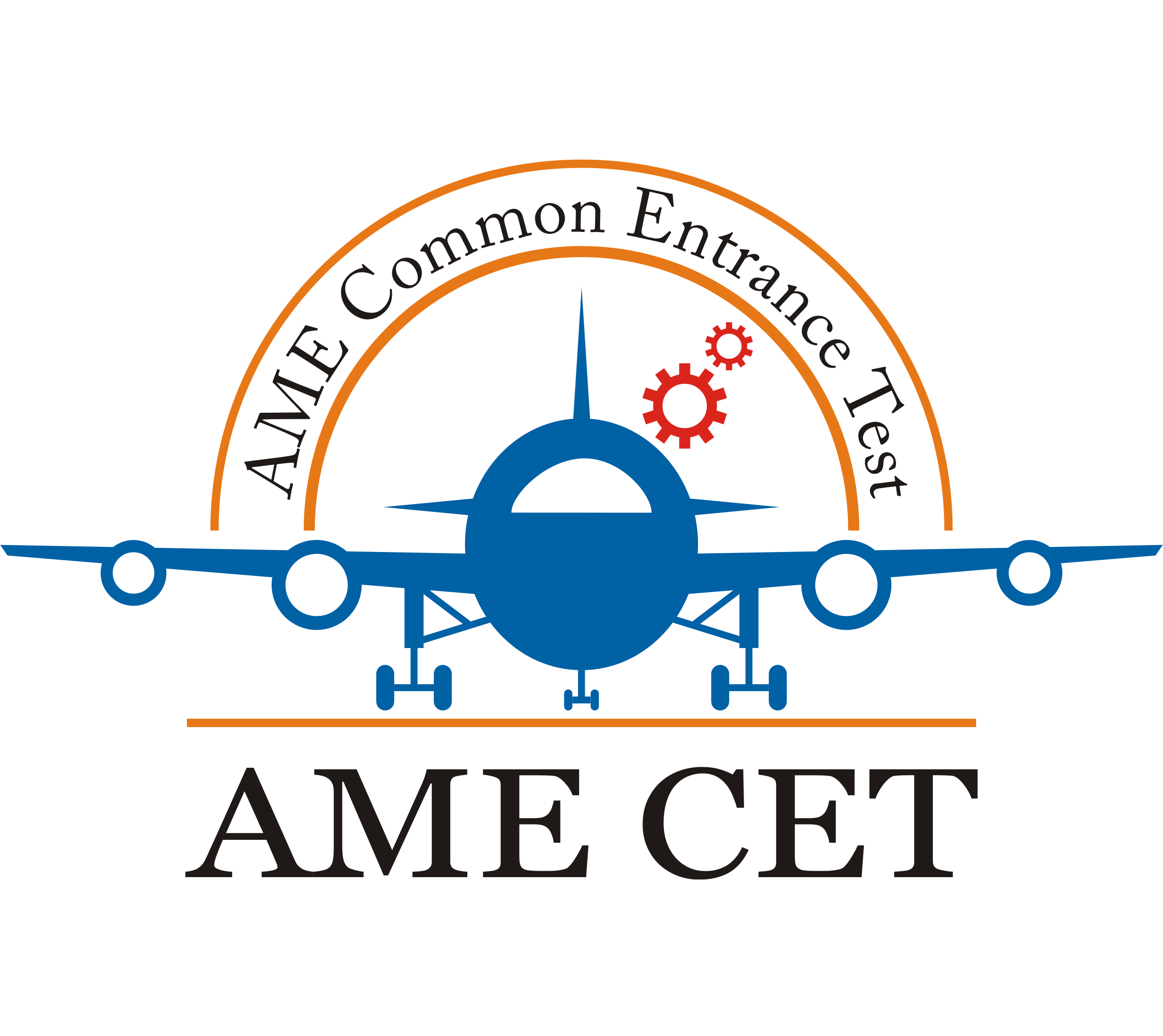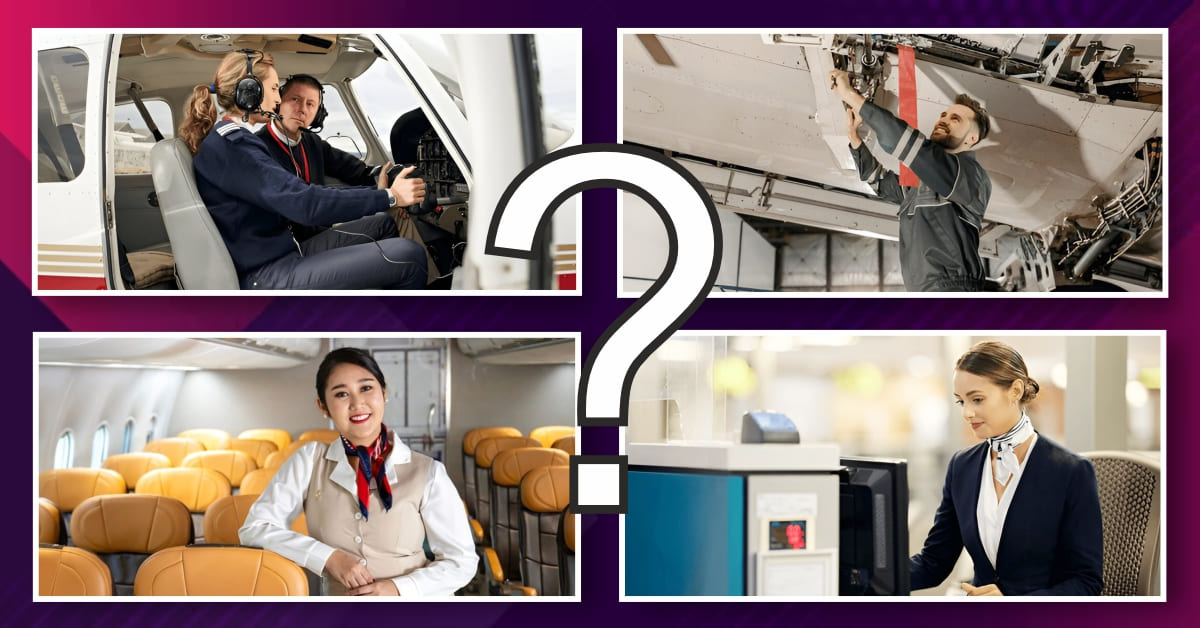Which is better for me: pilot training, AME, cabin crew, or airport management?
Posted on : 17 November, 2025 5:46 pm
Aviation is perhaps the most thrilling and varied sector on the globe. If you like aircraft, flying, and the excitement of performing in an ever-changing role, there are a range of career options open to you. Of the four most popular choices, Pilot Training, Aircraft Maintenance Engineering (AME), Cabin Crew, and Airport Management are all viable options. Each of these roles provides distinct advantages, difficulties, and future prospects.
But which is best for you? Let’s analyze it role by role, responsibility by responsibility, qualifications by qualifications, lifestyle by lifestyle, growth by growth, and salary opportunities by salary opportunities.
1. Pilot Training
1.1 Role & Responsibilities
Pilots’ job involves flying planes, ensuring crew and passenger safety, and flying through different weather conditions and airspaces. A commercial pilot’s life consists of periodic simulation training, physical and mental checkup, and keeping abreast with the rules of aviation.
1.2 Qualifications & Training
Must possess a minimum of 10+2 with Physics and Math.
Join a DGCA-approved flying school.
Get a Commercial Pilot License (CPL), which typically lasts for 18–24 months.
Considerable investment (₹30–₹50 lakhs in India or more elsewhere).
1.3 Lifestyle & Work Environment
High-pressure work with long hours and constant travel.
Shifts include early mornings, nights, weekends, and holidays.
Good-looking uniforms, allowances, and the chance to fly around the world.
1.4 Career Growth & Salary
New pilots get paid ₹1.5–2 lakhs/month (India), which rises with experience.
Can progress to become Captain, Instructor, or Chief Pilot.
Needs regular medical and simulator tests.
1.5 Who Should Opt for This?
Only if you enjoy flying, challenge yourself with it, and have no problem with responsibility and high training costs.
Physically and mentally healthy people who can endure stress and irregular timings.
2. Aircraft Maintenance Engineering (AME)
2.1 Role & Responsibilities
AMEs are tasked with the upkeep and certification of aircraft for safety. They check, fix, and confirm airworthiness of aircraft prior to and after flight.
2.2 Qualifications & Training
10+2 with Physics and Math.
Join a DGCA-approved AME course (2–4 years).
Get licensed according to CAR-66 regulations upon completion of modules and development of experience.
2.3 Lifestyle & Work Environment
Ground job, working at airports and hangars.
Fixed or rotating shifts based on airline or MRO organization.
Physically demanding, but fewer travels than pilots or cabin crew.
2.4 Career Growth & Salary
Beginning salary: ₹30,000–₹60,000/month in India.
With experience and license, can earn ₹1–2 lakhs/month or more.
High demand for trained AMEs throughout the world.
2.5 Who Should Choose This?
If you are tech-savvy, detail-oriented, and prefer ground work.
Less glamorous, but necessary and well-respected in aviation.
3. Cabin Crew
3.1 Role & Responsibilities
Cabin crew is responsible for passenger safety and comfort. Responsibilities involve in-flight service, first aid, handling emergencies, and resolving passenger issues.
3.2 Qualifications & Training
Minimum education of 10+2.
Height, weight, vision, and communication norms need to be fulfilled.
3–6 months of training at airline or aviation schools.
3.3 Lifestyle & Work Environment
Glamorous and customer-oriented.
High travel frequency, layovers, and irregular work schedules.
Has to be adaptable, social, and emotionally intelligent.
3.4 Career Growth & Salary
Freshers make ₹25,000–₹50,000/month.
International airlines can pay more than ₹1 lakh/month.
Can become Senior Cabin Crew, In-flight Manager, or Trainer.
3.5 Who Should Choose This?
If you like traveling, interacting with people, and working in the hospitality industry.
Appearance and grooming levels are significant.
4. Airport Management
4.1 Role & Responsibilities
Airport managers direct the day-to-day operations of airports. These activities involve passenger services, handling of cargo, safety rules, staff management, and logistics.
4.2 Qualifications & Training
Bachelor’s degree in Airport Management, Aviation, or equivalent field.
MBA in Aviation Management is an added advantage.
Training in customer service, security, and logistics is also beneficial.
4.3 Work & Lifestyle Environment
Operating from offices or airport terminals.
Normal work hours, although emergencies can take shifts beyond that.
Exposure to airlines, government agencies, security, and passengers.
4.4 Growth Opportunities & Salary
Initial salary: ₹30,000–₹50,000/month.
Managers and senior positions can make ₹1–2 lakhs/month.
Ability to work in India or overseas in civil or private airports.
4.5 Who Should Opt for This?
If you are an excellent planner, leader, and communicator.
Prefer stable work environments with some exposure to field operations.
Comparison of All Four Options
Criteria Pilot AME Cabin Crew Airport Management
Training Time 2 years 2–4 years 3–6 months 3–5 years
Cost High Medium Low Medium
Travel Yes No Yes Sometimes
Salary (Start) ₹1.5–2L/month ₹30–60K/month ₹25–50K/month ₹30–50K/month
Work Pressure High Medium High Medium
Career Growth High High Moderate High
Job Glamour Very High Low High Medium
How to Choose What’s Best for You?
1. Self-Assessment
Ask yourself:
Do I like technical or customer-facing jobs?
Can I tolerate physical or mental stress?
Am I comfortable with irregular working hours and frequent traveling?
Can I pay for the training?
2. Financial Readiness
Pilot training is the most costly, and cabin crew and airport management are quite cheap. Look into scholarships or educational loans if necessary.
3. Long-Term Vision
Consider where you will be 10 years from now. Pilots and airport managers can become executives. AMEs and cabin crew can reach senior positions but have less expansive leadership positions.
4. Job Security
All the jobs provide security, but AMEs and airport administrators tend to suffer less from airline financial instability than cabin staff or junior pilots.
Conclusion: Which is Best for You?
Select Pilot Training if you have always wanted to fly, can pay high training fees, and are physically and mentally ready for a challenging job.
Select AME if you are technically apt, like fixing machines, and prefer an essential yet background job in aviation.
Select Cabin Crew if you enjoy hospitality, travel, and interacting with people of diverse cultures.
Select Airport Management if you wish to work in a leadership or administrative role and are fond of planning, coordination, and operations.
Finally, the “best” choice relies on your interests, abilities, economic resources, and career aspirations. Each of the four is valued and integral to the world of aviation.

